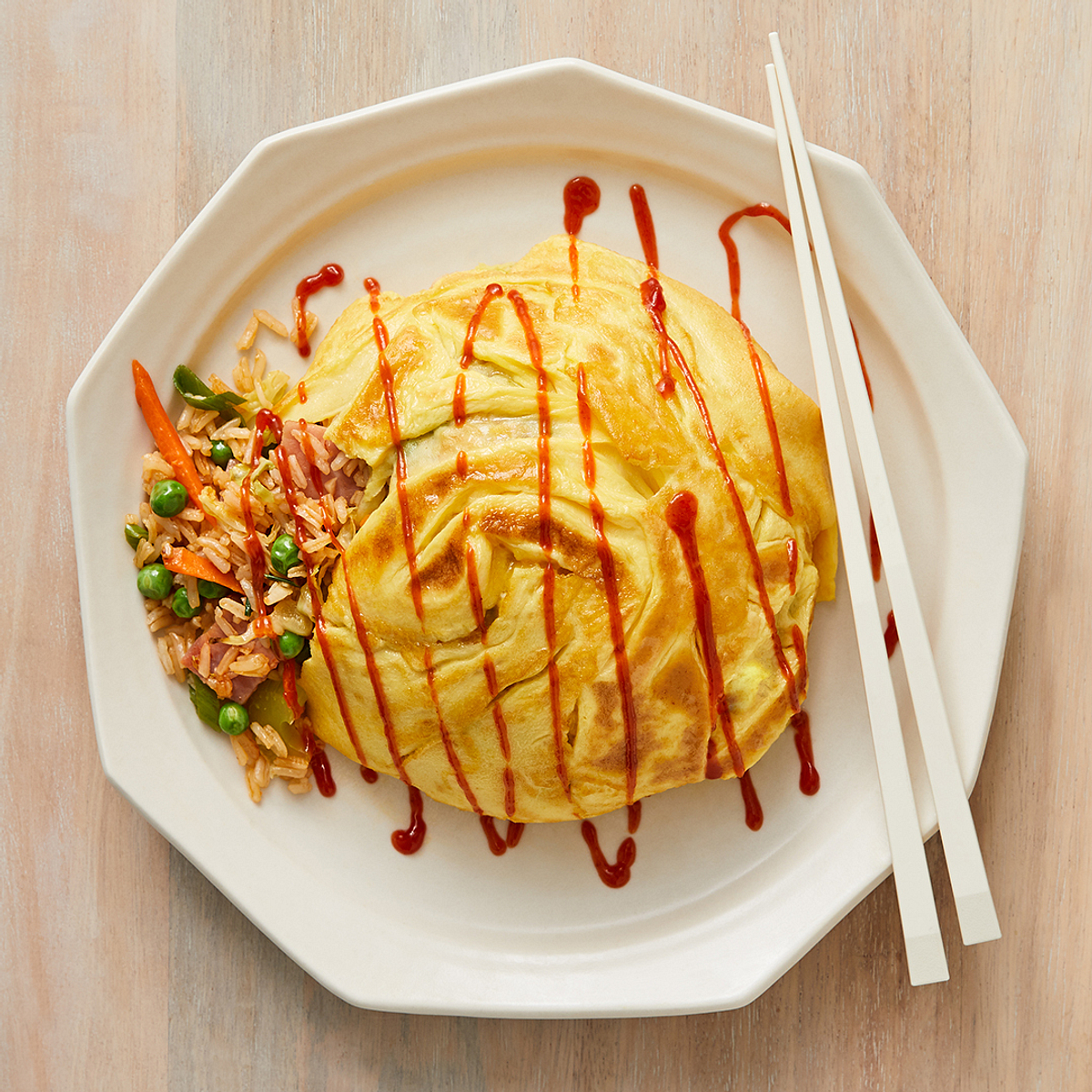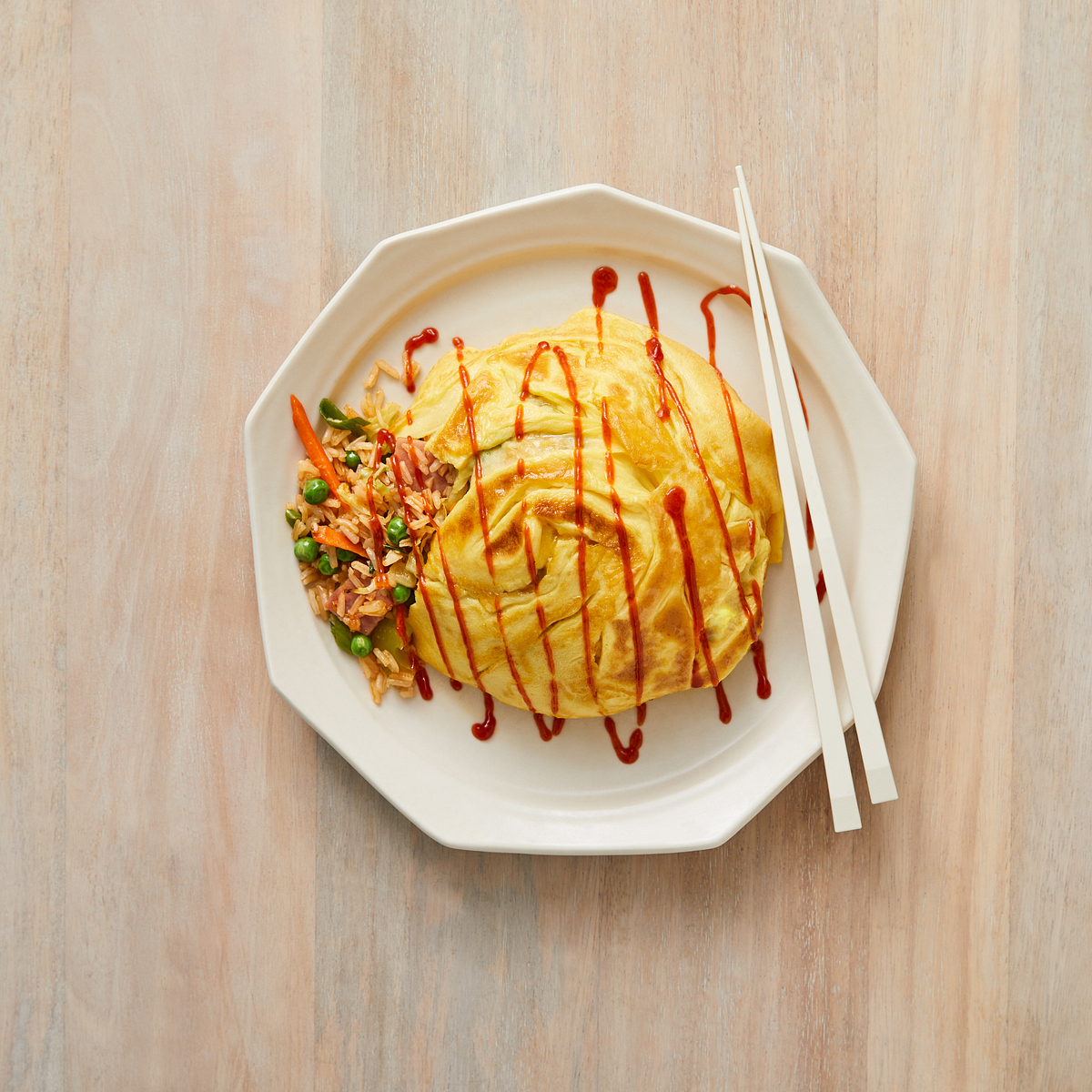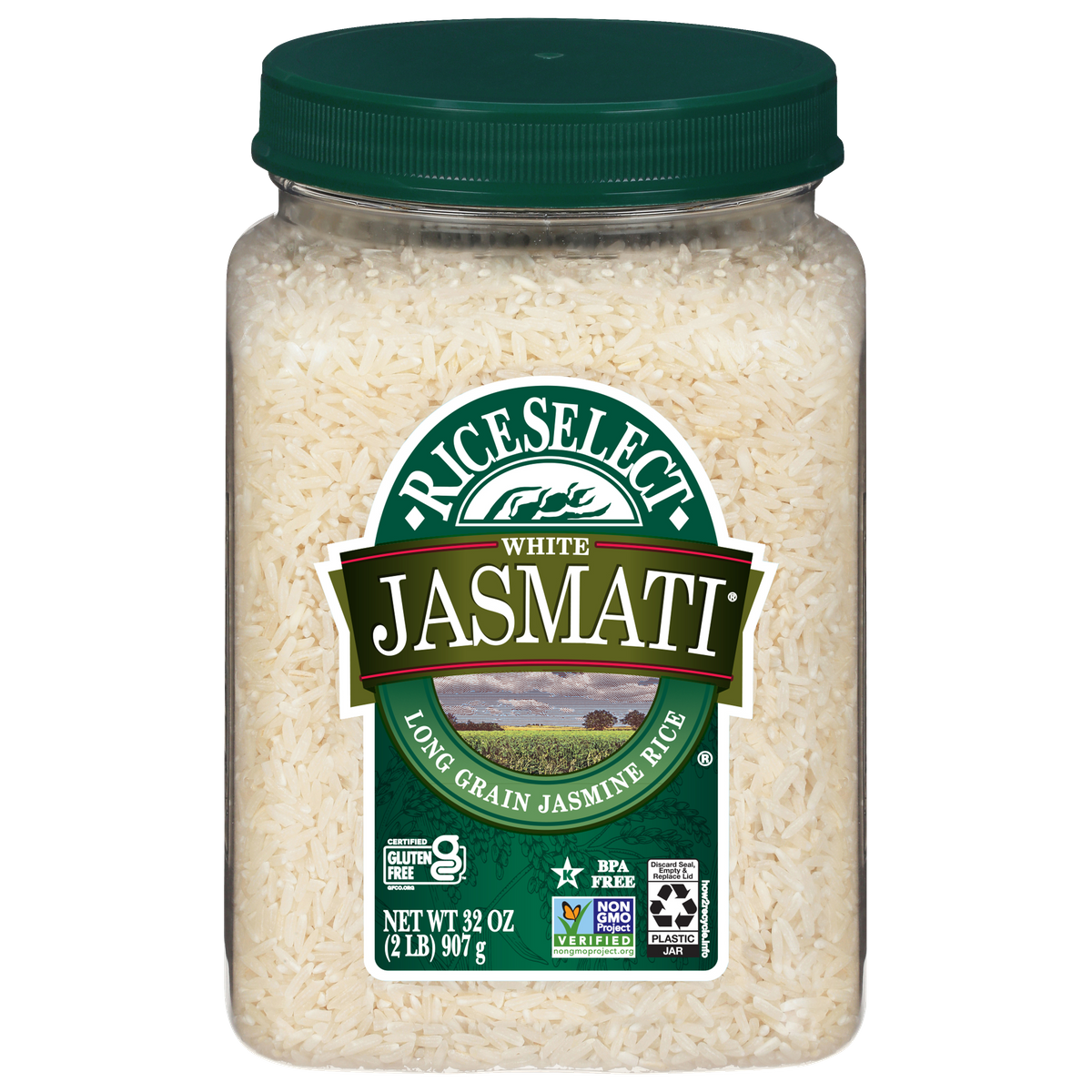Ingredients
- Fried Rice:
- Omelets:
Instructions
Fried Rice: Prepare rice according to package directions. Let cool completely. Stir together ketchup and sriracha; set aside.
In large skillet or wok, heat canola oil over medium-high heat; cook cabbage, ham, celery, carrot, green onions, peas and garlic, stirring, for 3 to 5 minutes or until vegetables start to soften. Stir in rice and sesame oil; cook for about 1 minute or until well coated. Stir in soy sauce, rice wine vinegar and half of the spicy ketchup mixture; cook, stirring for 4 to 6 minutes or until rice is heated through.
Divide rice mixture among 4 lightly greased small soup bowls; press to mould rice into bowl. Invert each rice mound onto serving plate; remove bowl when omelets are ready.
Omelets: Meanwhile, whisk together eggs, 1 tbsp water, salt and pepper. Melt 1 tbsp butter in small 8-inch skillet set over medium heat. Pour in 1/2 cup of the egg mixture. As eggs start to set around edge of skillet, gently push cooked portions toward center using spatula. Tilt and rotate skillet to allow uncooked egg to flow into empty spaces. When eggs are almost set on surface and no longer runny, about 3 to 5 minutes, slip spatula under edges of omelet to remove from pan.
Drape omelet over molded rice mound, with less cooked side down; using knife, push edges of omelet underneath the rice. Repeat with remaining butter, eggs and rice. Drizzle remaining spicy ketchup over top.
Rice For International Meals
Create an unforgettable meal any day with RiceSelect® Quinoa, Rice and Pasta varieties. This tasty Japanese Rice Omelet, or omurice, is prepared with our specialty Jasmati® Rice offering a subtle aromatic flavor and fluffy white rice taste. Using the right rice variety can make all the difference when preparing an international-inspired dish and RiceSelect® has everything you need.
Try our short-grain Sweet Sticky Dessert Rice to make a classic like Thai Mango Sticky Rice, or use our Arborio Rice for a rich and creamy risotto dish. Tip: Browse our cooking tips for home chefs blog section for tips on how to cook rice in different ways, learn about the world's most exceptional rice varieties, and learn how to cook arborio rice in a rice cooker!
Looking for a delicious dinner idea? Try our: best shrimp salad recipe.
What is Sriracha Sauce?
Sriracha is a thick, acidic, sweet, and garlicky chili pepper sauce. Although it's spicy, it has a far richer and more complex flavor than conventional hot sauces like Tabasco, which mostly taste of heat and vinegar. In comparison to watery American-style hot sauces, which are often created by puréeing peppers with vinegar and then filtering off the solids, it is far thicker, having a consistency more like ketchup or tomato sauce.
Sriracha Ingredients
What ingredients are in Sriracha? Although the list of components in sriracha can differ depending on the brand or recipe. Chilis, sugar, salt, garlic, distilled vinegar, potassium sorbate, sodium bisulfite, and xanthan gum are the components of Sriracha.
Taste of Sriracha
Even though its primary ingredient is red jalapeño peppers, when compared with other hot sauces, sriracha isn’t all that spicy. According to the Scoville scale (a unit of measure for the level of heat in chilis), sriracha measures only about 2,200 Scoville Heat Units (SHU); straight red jalapeño peppers, meanwhile, range between 2,500 and 8,000 SHU.
Though it is undoubtedly spicy, sriracha is not as hot as Tabasco sauce, which measures 2,500 SHU, or Choulula hot sauce, which clocks in at 3,600 SHU. However, sriracha is hotter than most popular cayenne pepper hot sauces like Crystal (800 SHU), Texas Pete (450 SHU) and Frank’s Red Hot (450 SHU).
How to Use It
What culinary uses does Sriracha have? Just about everything! If you're just being introduced to it as a condiment, picture a hot ketchup made with chili peppers. Try combining it with some mayonnaise to tone down the spice and using it as a sandwich spread or dipping sauce for fast food fries. Sriracha is an Asian condiment, but it plays nicely with umami-rich food from all over the world.
Little amounts can be added as an ingredient to soups, stews, and sauces to offer subtle notes of garlic and chilis without having to worry about adding too much heat. With Vietnamese pho, it's a must-have! Moreover, Sriracha is a fantastic addition to marinades for meat, fish, tofu, and vegetables. Sriracha may also be used in sweets; give peanut brittle a try!
Substitutes
What else can be used in place of sriracha? Knowing how sriracha differs from spicy sauce may help you identify a suitable replacement in the future. Any alternative to sriracha should have a similar thickness and flavor that goes beyond just heat and vinegar. Asian condiments with a chili-pepper base, such as Chinese chili crisp, Korean gochujang, Japanese chili-garlic sauce, and Indonesian sambal olek, can serve as effective alternatives for Sriracha.
How to Store
Sriracha does not require refrigeration because it is so rich in natural and added preservatives. Both vinegar and the chemical that gives chili peppers their heat, capsaicin, are natural preservatives that are inhospitable to bacteria and other unsavory creatures. Sriracha is totally safe to consume as long as it is kept in a cold, dry environment.
Try some in our Brown Rice and Black Bean Burrito.



